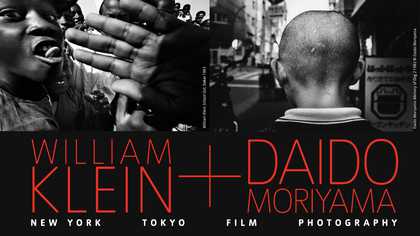Tate Modern, Starr Auditorium
November 2012 – January 2013
Tate Modern presents a survey of the film work of William Klein, one of the twentieth century’s most important photographers and film-makers, in conjunction with Tate Modern’s exhibition William Klein + Daido Moriyama.
William Klein is mainly known for his early experimental photography and his later documentary films, such as Muhammad Ali the Greatest 1969, but he also directed some of the most accomplished big screen social satires of the 1960s and 1970s, such as the wacky satire Who Are You Polly Magoo 1966 starring his favourite fashion model Dorothy McGowan.
William Klein was born in New York, USA in 1928 but has lived most of his life in Paris where he became part of the influential circle of avant-garde film-makers known as the ‘French New Wave’s Left Bank’ in the mid-1960s. After assisting on Federico Fellini’s Nights of Cabirain 1956, Klein worked as art director on Louis Malle’s Zazie dans le métro 1960 and made various films for French television, including the feature documentary The Big Store in 1961 with Simone Signoret, before embarking on the creation of his own fiercely independent films inspired by the French New Wave and the films of Chris Marker.
This survey of Klein’s cinema will feature numerous highlights, including:
- Who Are You, Polly Maggoo? 1966, a fictional satire of the fashion industry which was Klein’s first feature film and was awarded the Prix Jean Vigo at the Cannes Film Festival.
- Broadway by Light 1958, Klein’s directorial debut, which has been called the first pop film.
- Cassius le Grand 1965, his first feature-length documentary, which was later recut with additional footage from the fight with George Foreman in Zaire to make Muhammad Ali the Greatest 1974.
William Klein + Daido Moriyama runs from 10 October 2012 to20 January 2013 at Tate Modern. It is the first exhibition to examine the work ofWilliam Klein in parallel with that of Daido Moriyama (b.1938), the most celebrated photographer to emerge from the Japanese Provoke movement. The exhibition is formed of two retrospectives side by side, bringing together vintage prints, contact sheets, film stills, photographic installations and archival material.

